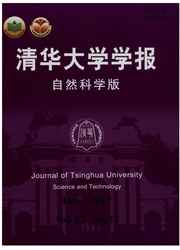

 中文摘要:
中文摘要:
干旱区节水农业发展过程中,不合理的水土政策可能导致农业用水增加的灌溉效率悖论现象,需要评价水土政策对节水农业发展的影响。该文建立了社会水文耦合模型,包含水土政策、灌溉面积、灌溉用水和环境指标等模块,反映人类政策行为与自然环境变化之间的动态反馈关系。基于该模型,以新疆巴音郭楞蒙古自治州地区1998—2010年节水农业发展过程为例,设置弱、低、中和强这4种耕地限制力度情景,分析不同情景下干旱区节水农业发展特征。对反映现状的弱耕地限制力度情景的模拟有效解释了"灌溉效率悖论"现象的发展过程机理。进一步情景对比分析显示:在耕地低限制力度情景和中限制力度情景下,2005年后灌溉用水总量趋于稳定且灌溉面积仍出现较快增长;在强耕地限制力度情景下,农户的节水能力和动力受到限制,1998—2010年间灌溉用水总量呈现持续上升的趋势,灌溉面积和节水灌溉面积均增长缓慢,农业经济发展受到抑制。该文的结果表明:基于社会水文耦合模型建立的水土政策分析评价框架,能够揭示导致灌溉效率悖论的水土政策作用机理,从而为干旱区节水农业水土政策的制定提供评价方法和理论支撑。
 英文摘要:
英文摘要:
Improper water and land policies to encourage water conservation may lead to increased agricultural water use,which is called the irrigation efficiency paradox.This study assesses the impact of water and land policies on water-conservation in agriculture development.This study uses a coupled socio-hydrological model which includes water and land policies,irrigated land area,irrigation water use and an environmental indicator.The interactions between the human responses to the policies and the environmental changes are reflected in the model.The model is used to analyze the agriculture water-conservation development during 1998—2010in Bayinguoleng Mongol Autonomous Prefecture, Xinjiang as an example with four policy scenarios including weak irrigation land control,low irrigation land control,medium irrigation land control and strong irrigation land control to analyze how agriculture water-conservation develops with different policy scenarios.With the weak irrigation land control scenario which represents the actual situation,the model effectively represents the process mechanism for the irrigation efficiency paradox.The analyses further shows that the low and medium irrigation land control scenarios stabilize the total irrigation water use after 2005 while the irrigation area quickly increases.The strong irrigation control severely limits the ability and the initiative of the water users.The total irrigation water use increased during 1998-2010 with small increases in the amount of irrigated land and the irrigation areas with water-conservation.These slowed the agricultural economic development.The results show that this framework of the water-use policies based on the coupled socio- hydrological model can be used to capture the mechanism that leads to the irrigation efficiency paradox as an effective evaluation method with theoretical support for making proper water and land policies for agriculture water-conservation in semi-arid areas.
 同期刊论文项目
同期刊论文项目
 同项目期刊论文
同项目期刊论文
 A two-dimensional numerical model coupled with multiple hillslope hydrodynamic processes and its app
A two-dimensional numerical model coupled with multiple hillslope hydrodynamic processes and its app Inverse modeling of hydrologic parameters using surface ?ux and runoff observations in the Community
Inverse modeling of hydrologic parameters using surface ?ux and runoff observations in the Community Urbansignatures in thespatial clusteringof summer heavy rainfall events over the Beijing metropolita
Urbansignatures in thespatial clusteringof summer heavy rainfall events over the Beijing metropolita Impact of Urbanization on Heavy Convective Precipitation under Strong Large-Scale Forcing: A Case St
Impact of Urbanization on Heavy Convective Precipitation under Strong Large-Scale Forcing: A Case St 期刊信息
期刊信息
